One of the main problems with Windows Service
Packs is that, whenever you come to re-install the
Windows operating system, you always have to then
start downloading and installing all the relevant
service packs before your system is up and running
again.
This can be quite a chore, in some cases taking
many hours to actually complete.
One way of getting around the problem of
constantly having to download a Service pack is to
actually Slipstream the service pack onto a copy of
your Windows operating system DVD.
Previously, especially with Windows Vista,
slipstreaming was actually a complicated affair with
the user having to utilize the Windows SDK
application. Fortunately, with RT Seven Lite, the
process has become considerably easier.
Before you can start the slipstreaming process
you need the following:
- Windows 7 DVD.
- Copy of the Windows Service Pack you intend
to slipstream.
- Copy of RT Seven Light. Please ensure to
download the correct version, either 32 Bit or
64 Bit.
You can download an ISO copy of Windows 7 Service
Pack 1 from the Microsoft download site
Windows Service Pack 1
You can download a copy of RT Seven Light here:
RT
Seven Light Download Note: you
currently need to download Beta version 2.6.0 as
this is the only version currently supporting
slipstreaming.
Once you have downloaded RT Seven Light, Install
it and the Run the application.
- When you start RT Seven Light the first
thing you will see is the RT Seven Light splash
screen.
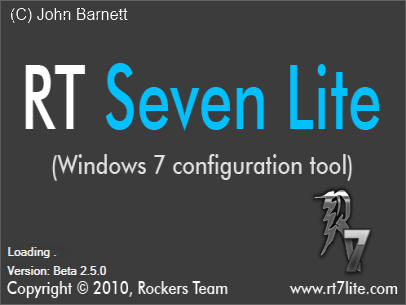
Fig: 45-1 RT Seven Splash
Screen
- Insert your Windows 7 operating system DVD.
The Autoplay box will now appear. Cancel this by
clicking the red X in the top right hand corner
of the Autoplay window.
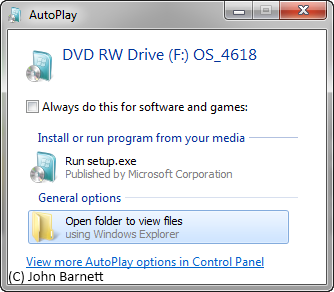
Fig: 45-2 AutoPlay Window
- 4. In the Welcome to RT Seven Light window,
Click the Browse button.
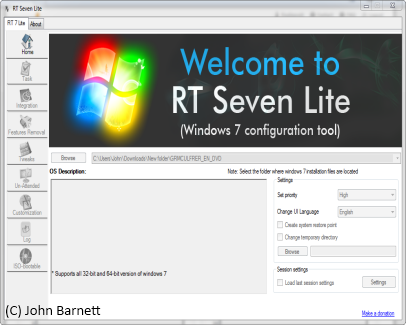
Fig: 45-3 RT Seven Lite's
Main Interface
- The Browse button gives you two options:
Select OS path and Select ISO File.
- Select the path of your operating system. In
this case we are using the Windows 7 DVD so
click on the arrow to the left of Computer and
then select your DVD drive.
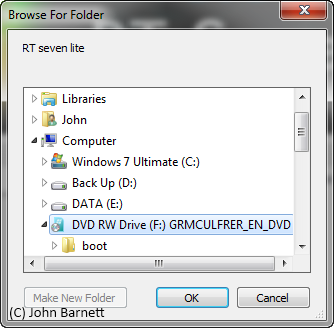
Fig: 45-4 Browse for Folder
Window
- The following message will appear. This
operation cannot be performed, first save the
file on your hard disk. Do you want to Save on
your local disk?
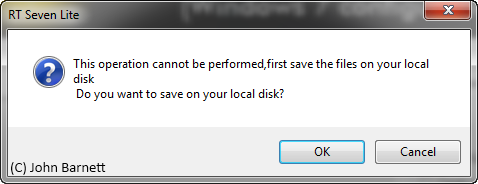
Fig: 45-5 Operation cannot be
performed message
- To continue you need to press the OK button.
The Browse for folder window will now open.
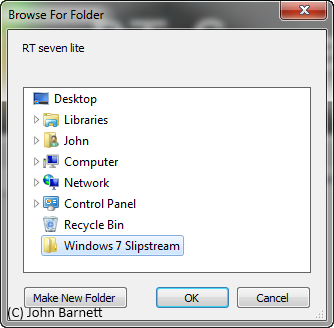
Fig: 45-6 Make New Folder
- Click the Make New Folder option, select the
new folder's location and give it a name.
- Windows will now begin copying the operating
system files to your selected folder on your
hard drive.
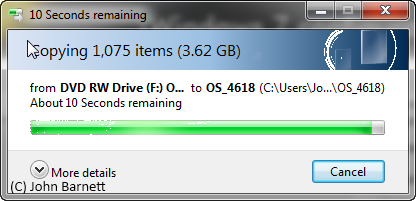
Fig: 45-7 Windows is now
copying files to the hard drive
- When copying has completed the List of
operating system window will appear.

Fig: 45-8 Select the
operating system you are using
- Select the image you want to configure from
the list and then place a tick in the box to the
left of the slipstream Service Pack option.
- Once you have done this press OK. Select the
location of the Service pack and then press the
Start button.
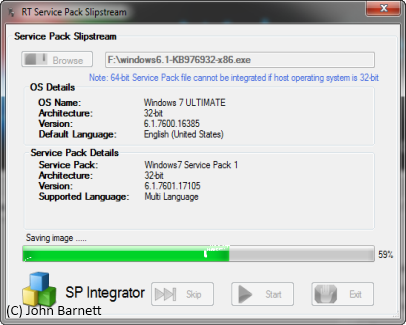
Fig: 45-9 Integration
progress is shown by the progress bar
- The service pack will now start to integrate
into your Windows 7 operating system.
- After the service pack has been integrated,
Click the Proceed button.
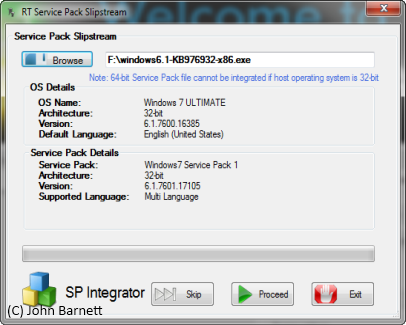
Fig: 45-10 Click the Proceed
button to continue the operation
- The combined new image will now start
loading into the welcome screen.
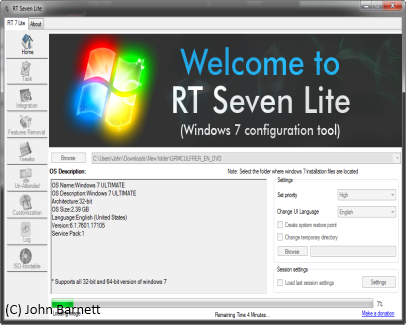
Fig: 45-11 New image progress
- Once completed the Task button on the left
hand menu will turn red. Click on the task
button to continue.
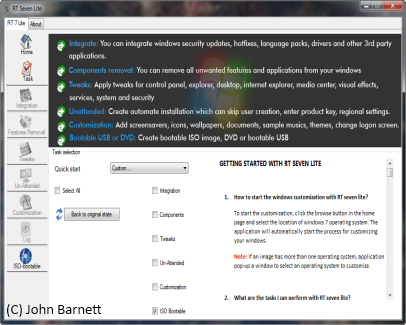
Fig: 45-12 Select the ISO
Bootable option
- In the Task window place a tick in the box
next to the ISO Bootable option.
- The ISO Bootable option on the left hand
menu will now turn blue. Click this button to
continue.
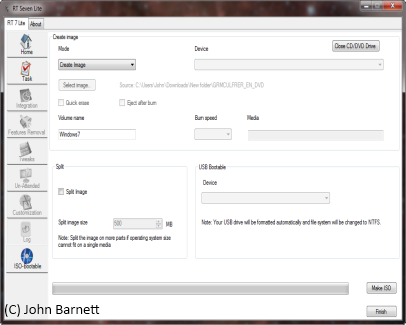
Fig: 45-13 Select a mode to
see the available options
- In the Mode section, Click the arrow on the
Select a mode box. A drop down menu will now
appear with the following options: Direct Burn;
Create Image; Burn Image; Erase RW; USB
Bootable.
- Select the mode you require. For this
example we are using the Create Image option to
burn an ISO to the hard drive. You can, however,
chose the Direct Burn if you simply want to burn
the ISOI directly to a DVD.
- Now click the Make ISO Button. The Windows
Save As window will now open.
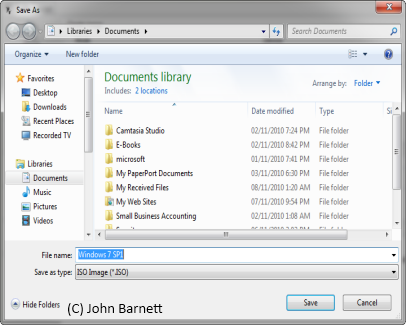
Fig: 45-14 Type in the name
of the file you want to save
- Select the file location for the ISO and
give the file a name, then press the Save
button.
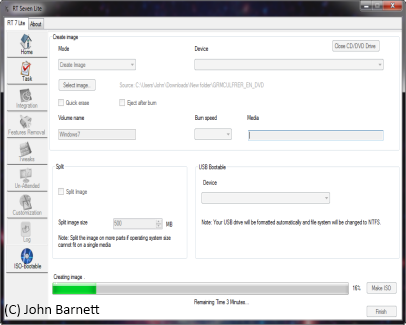
Fig: 45-15 The ISO image will
now be prepared
- RT Seven Lite will now start to prepare the
ISO image.
- Once the ISO or burned image (depending upon
which you initially selected) has been completed
a message will appear informing you that the
Image has been successfully created. Click OK to
close the message.
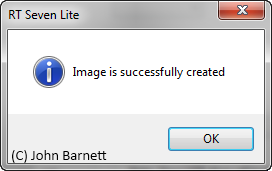
Fig: 45-16 The Image has been
successfully created box will appear once
completed
- Now that the ISO has been created, click the
Finish button.
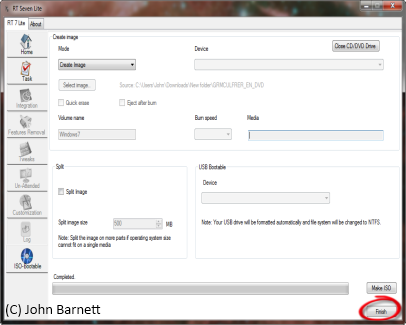
Fig: 45-17 To complete the
project, Click the Finish button
- You will now be asked if you want to close
RT 7 lite. Click Yes.
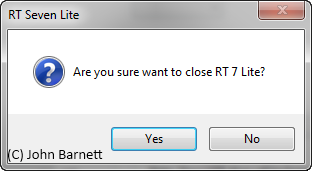
Fig: 45-18 The job is now
complete
- Once you have clicked Yes, RT Seven Lite
will start its cleaning process to remove all
temporary files, etc., relating to the current
operation.
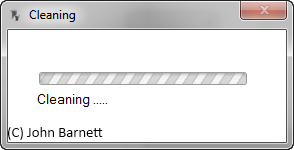
Fig: 45-19 RT Seven Lite
automatically cleans up
- Your ISO (or Burned image) is now ready to
use.